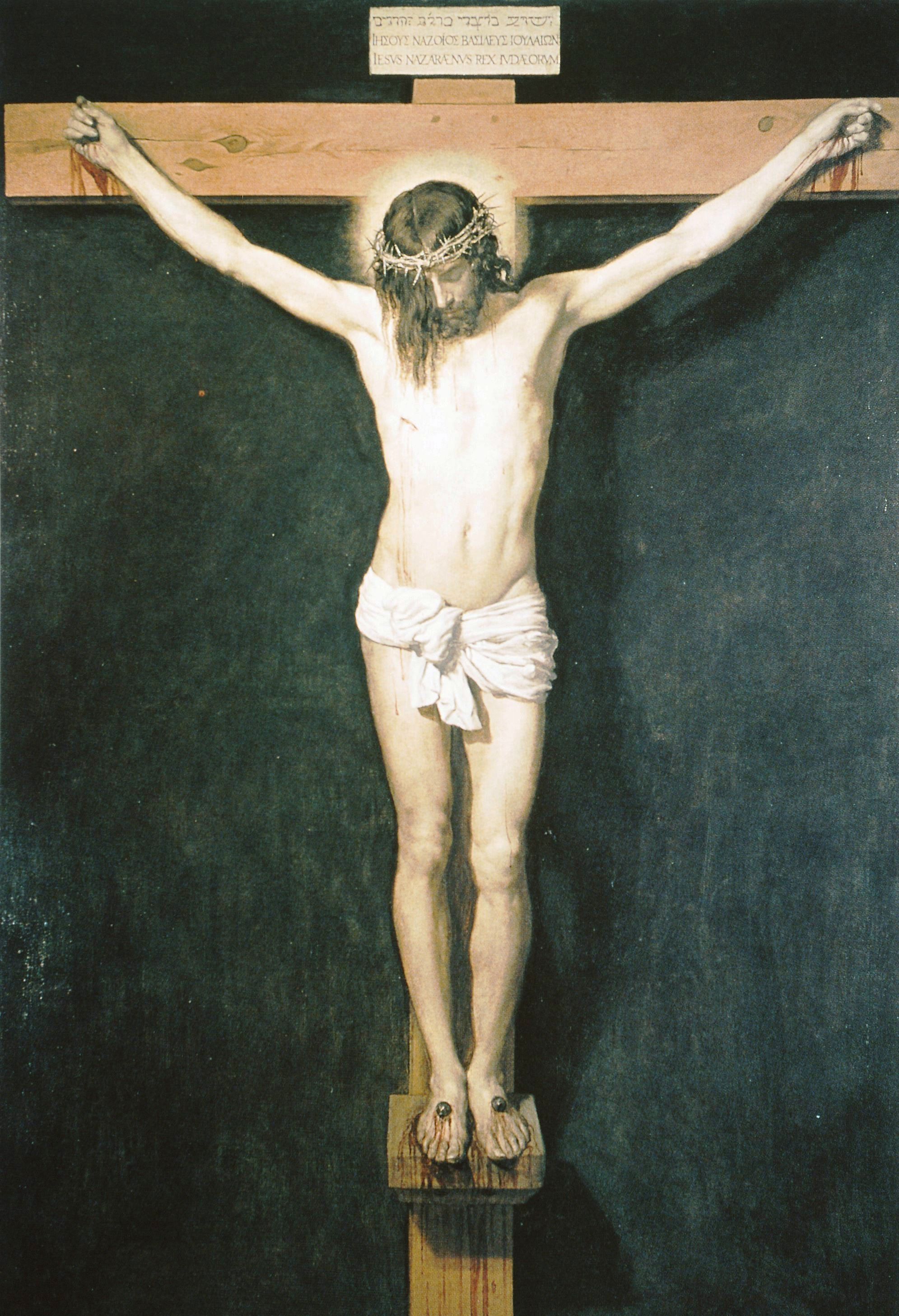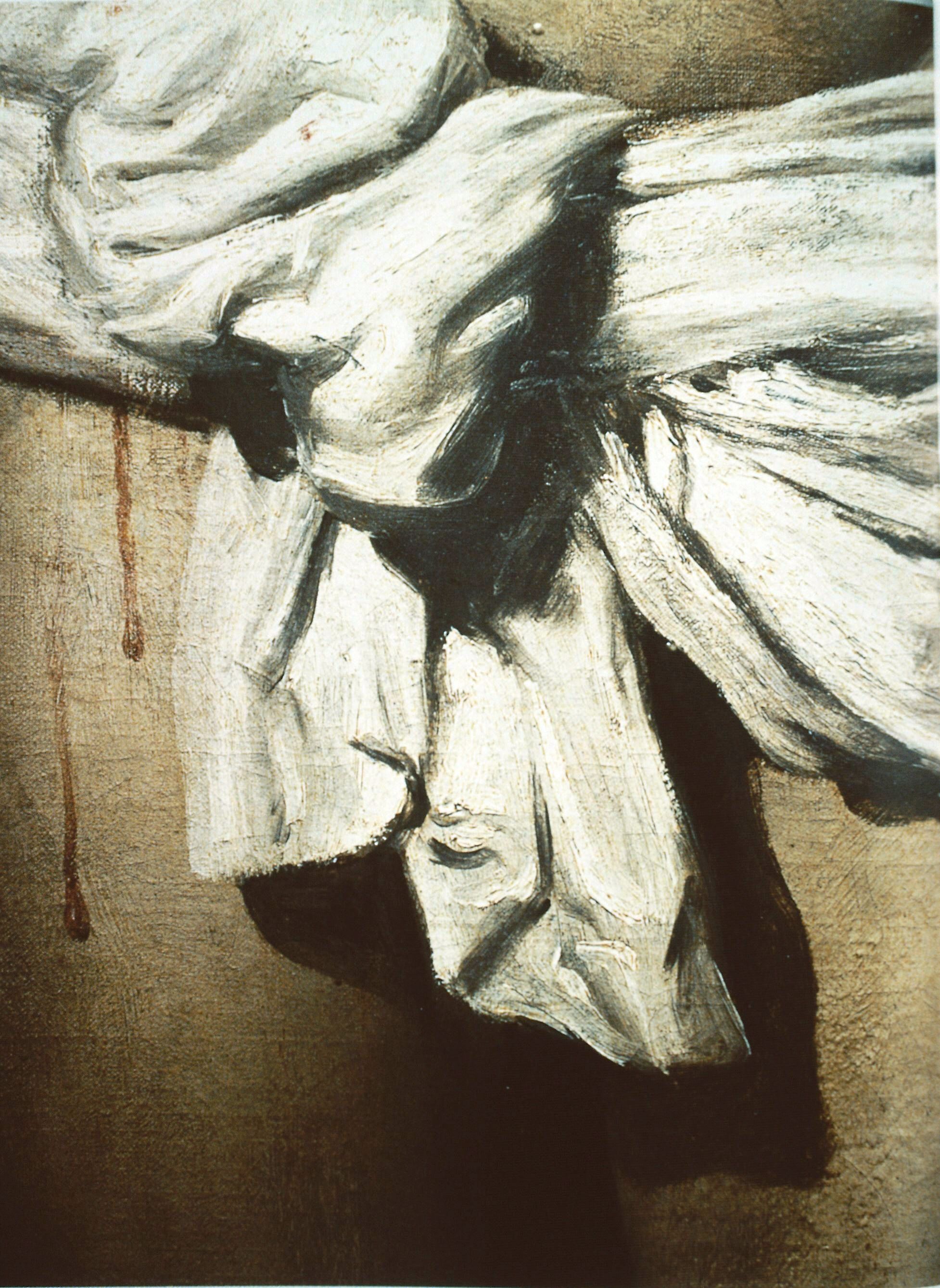
And how it is connected with the rosary. Have you ever had the experience of walking into an art gallery and being struck by a wonderful painting on the far side of the room. You are so captivated by it that you want to get closer. As you approach it, something strange happens. The image goes out of focus and dissolves into a mass of broad brushstrokes and unity of the image is lost. Then, in order to get a unified picture of the whole you have to recede again. The painting is likely to be an Old Master produced in the style of the 17th-century baroque, perhaps a Velazquez, or a Ribera, or perhaps later artists who retained this stylistic effect, such as John Singer Sargent. I recently made a trip to the art museum at Worcester, Massachusetts and there was a portrait by Sargent there that was about 12ft high and forced us back maybe 35ft so that we could view the whole.
This is a deliberately contrived effect of baroque painting. These paintings are created to have optimum impact at a distance. It is sad that the art gallery is the most likely place for us to find any art, let alone any sacred art that conforms to its principles. The stylistic elements of the baroque relate to its role firstly as a liturgical art form in the Counter-Reformation. The baroque of the 17th century is also the last style historically that Benedict XVI cites as an authentic liturgical tradition - where there is a full integration of theology and form - It should be of no surprise that this has an impact upon prayer.
The best analysis of the stylistic features of the baroque of the 17th century that I have seen is in a book about Velazquez, published in 1906 and written by RAM Stevenson (the brother of Robert Louis). RAM Stevenson trained as a painter in the same studio in Paris as John Singer Sargent. This studio, run by a man called Carolos Duran was unusual in the 19th century in that it did not conform to the sentimental academic art of the time (such as we might have seen in Bougeureau, whose painting is shown above), but sought to mimic the style the great artists of the 17th century, such as Velazquez. In this he says: “A canvas should express a human outlook on the world and so it should represent an area possible to the attention; that is, it should subtend an angle of vision confined to certain natural limits of expansion.[1] ” In other words we need to stand far enough away from the painting so that the eye can take it in as a single impression. Traditionally (following on from Leonardo) this is taken to be a point three times longer than the greatest dimension of the painting. This ratio of 3:1 is in fact an angle of 18°, slightly larger than the natural angle of focused vision of the eye, which is about 15°. When you stand this distance away, the whole painting can be taken in comfortably, without forcing the eye to move backwards and forwards over it to any extent that is uncomfortable.
 If the intention is to appear sharp and in focus at a distance of three times the length of the canvas, it must be much painted as much softer and blurred on the canvas itself. In practice this means that when one approaches a canvas, the brush stroke is often broader than one first expected. So that if we do examine a painting close too, it is often hard to discern anything, it almost looks like a collection of random brush strokes. The whole thing only comes together and knits into an image once we retreat again far enough to be able to see it as a unified image. This property makes baroque art particularly suitable for paintings that are intended to have an impact at a distance. The scene jumps out at us.
If the intention is to appear sharp and in focus at a distance of three times the length of the canvas, it must be much painted as much softer and blurred on the canvas itself. In practice this means that when one approaches a canvas, the brush stroke is often broader than one first expected. So that if we do examine a painting close too, it is often hard to discern anything, it almost looks like a collection of random brush strokes. The whole thing only comes together and knits into an image once we retreat again far enough to be able to see it as a unified image. This property makes baroque art particularly suitable for paintings that are intended to have an impact at a distance. The scene jumps out at us.
There is an additional optical device that contributes to this. The composition of the painting is such that the figures are painted in the foreground. Two things: the placement of the horizon; and the relationship between the angle of vision of the perimeter of the canvas and that angle which spans each figure within, affect the sense of whether the image is in the foreground, middle ground or background in relation to the observer. Baroque art tends to portray the key figures in the foreground. When these two effects are combined the effect is powerful.
If we look consider the very famous painting of Christ on the cross by Velazquez, for example. Its appearance at a distance is of a perfectly modeled figure. As we approach we see that much of the detail is painted with a very loose, broad brush. I have picked out the loin cloth and face as detail examples. The artist achieves this effect is achieved by retreating from the canvas, viewing the subject at a distance and then walking forward to paint the canvas from memory. Then after making the brushstroke the artist returns to review the work from the position from which he intends the viewer to see it several feet back. I learnt this technique when I studied portrait painting in Florence. I was on my feet, walking backwards and forwards for two three-hour sessions a day (punctuated by cappuccino breaks, of course). Over the course of an academic year I lost several pounds! I was told, though I haven’t been able to confirm the truth of it, that Velazquez did not feel inclined to do all that walking, so had a set of brushes made that had 10ft handles.
 This dynamic between the viewer and the painting is consistent with the idea of baroque art which is to make God and his saints present to us here, in this fallen world. There may be evil and suffering, but God is here for us. Hope in Christ transcends all human suffering. The image says, so to speak, ‘you stay where you are – I am coming to you. I am with you, supporting you in your suffering, here and now’. The stylistic language of light and dark in baroque painting supports this also. The deep cast shadow represents evil and suffering, but it is always contrasted with strong light, representing the Light that ‘overcomes the darkness’.
This dynamic between the viewer and the painting is consistent with the idea of baroque art which is to make God and his saints present to us here, in this fallen world. There may be evil and suffering, but God is here for us. Hope in Christ transcends all human suffering. The image says, so to speak, ‘you stay where you are – I am coming to you. I am with you, supporting you in your suffering, here and now’. The stylistic language of light and dark in baroque painting supports this also. The deep cast shadow represents evil and suffering, but it is always contrasted with strong light, representing the Light that ‘overcomes the darkness’.
This is different to the effect of the two other Catholic liturgical traditions as described by Pope Benedict XVI, the gothic and the iconographic. These place the figures compositionally always in the middle ground or distance, and so they always pull you in towards them. As you approach them they reveal more detail. (See a previous article on written for the New Liturgical Movement on the form of icons for more the reasons for this).
In this respect these traditions are complementary, rather than in opposition to each other. It has since struck me that the mysteries of the rosary describe this complementary dynamic also. They seem to describe an oscillating passage from earth to heaven and back again that helps us understand that God is simultaneously his calling us from Heaven to join him, but He is also with us here and helping to carry us up there, so to speak. If we consider the glorious mysteries, for example: first Christ is resurrected from the dead and then he ascends to heaven. Then He sends the Holy Spirit from heaven to be with us. Then we consider how Our Lady followed him, in her Assumption, and she and all the saints are in glory praying for us to join them. Both dynamics take place at the Mass itself. Christ comes down to us and is really present in Blessed Sacrament. As we participate in the Eucharist, we are raised up to Him supernaturally and then through Him and in the Spirit to the Father.
[1] RAM Stevenson, The Art of Velazquez, p30.


